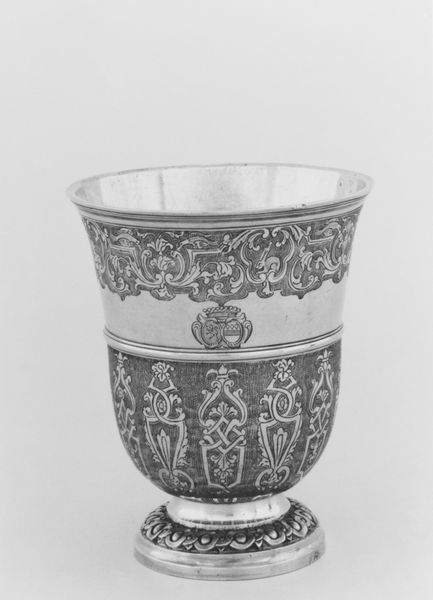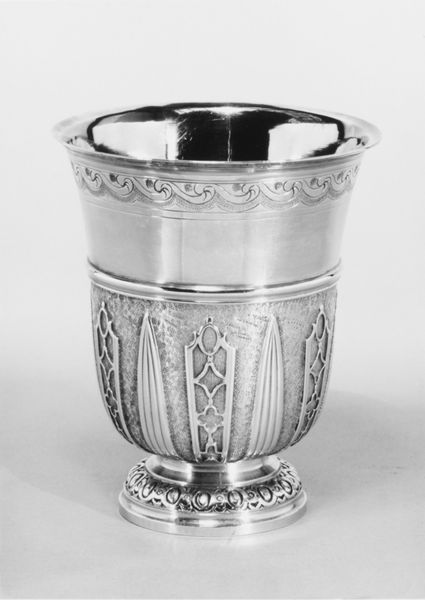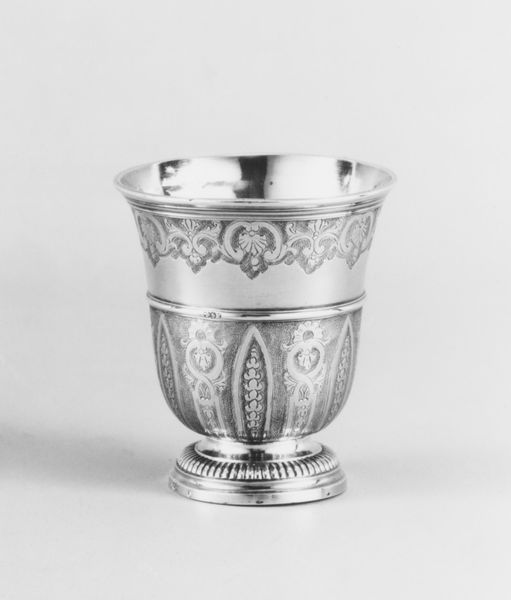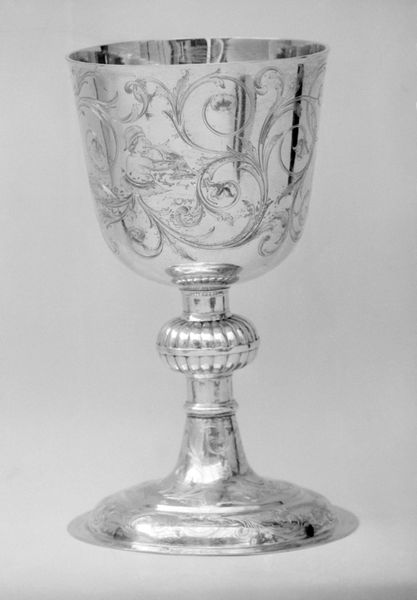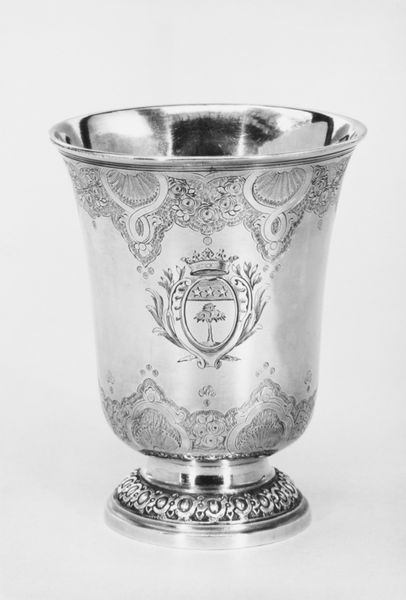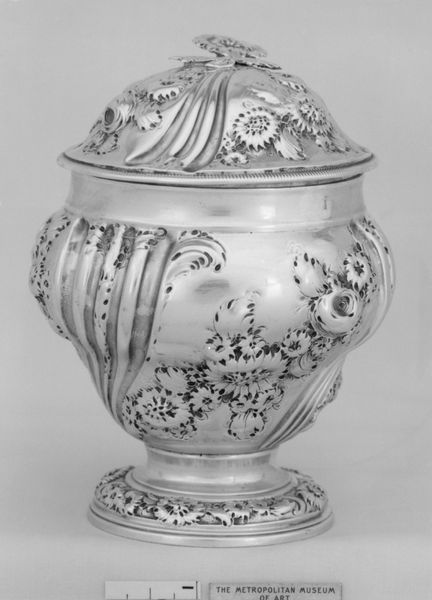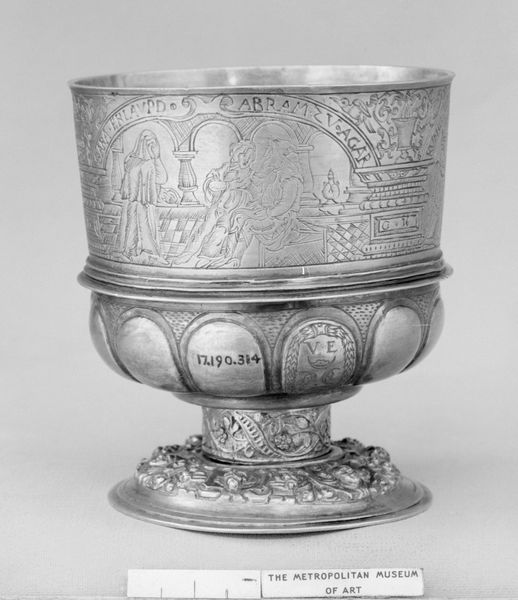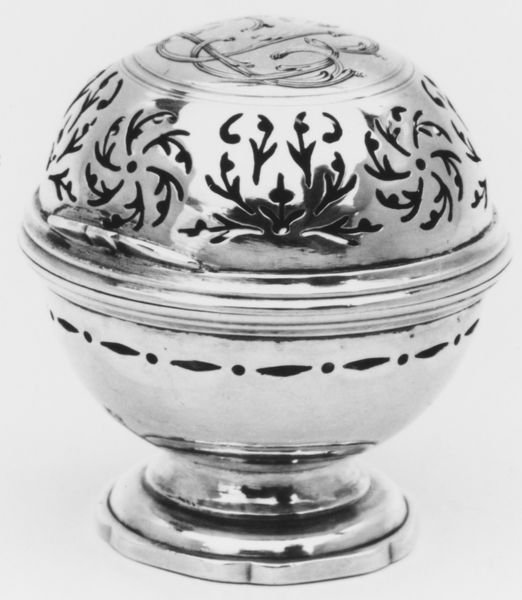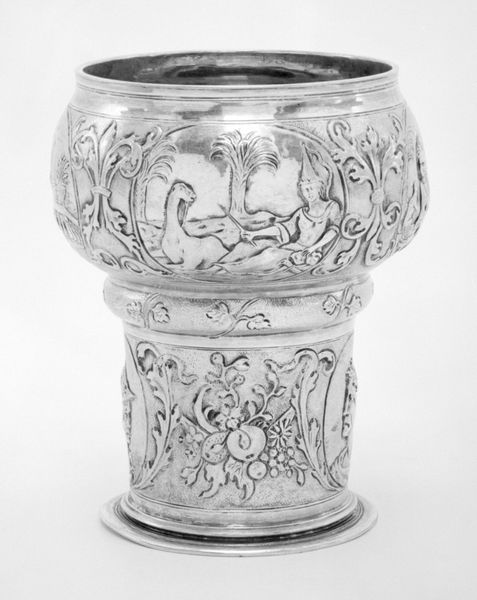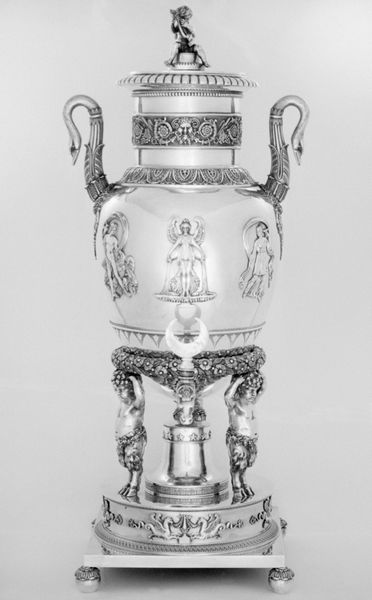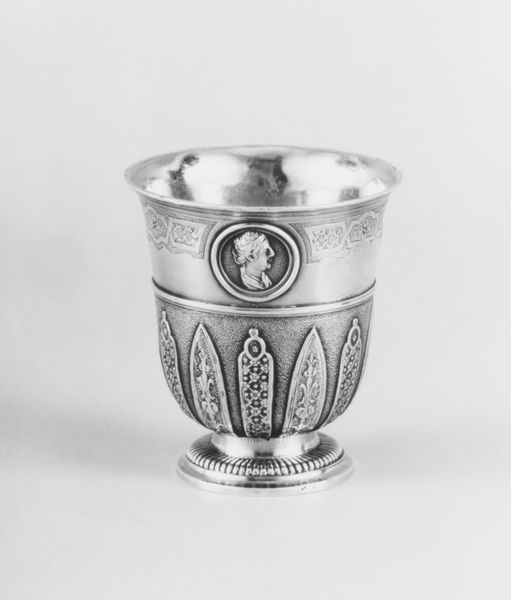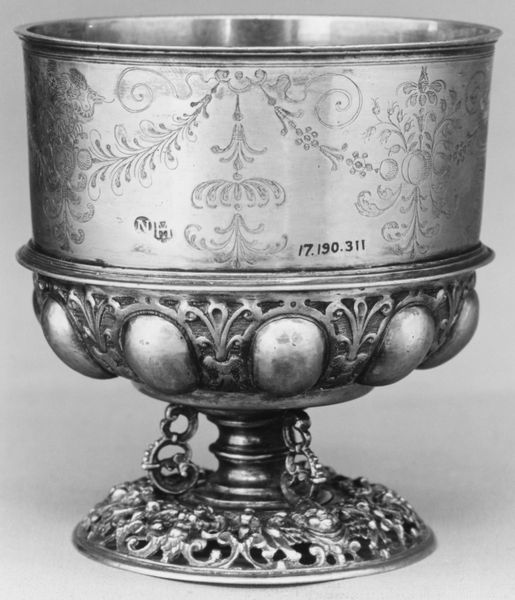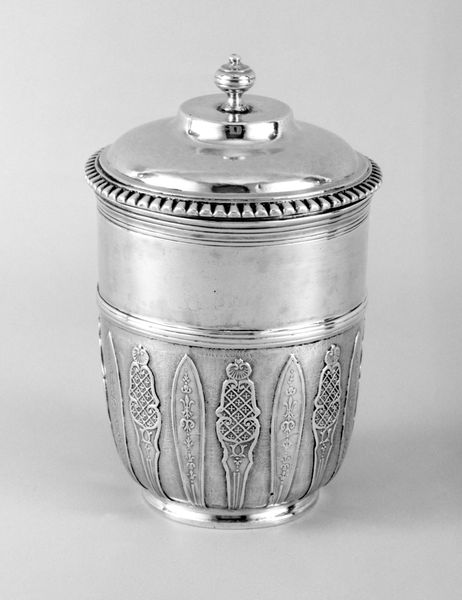
Beaker 1778 - 1780
0:00
0:00
Dimensions: Height: 4 1/8 in. (10.5 cm)
Copyright: Public Domain
Editor: This is a silver beaker made around 1778-1780, currently held at the Metropolitan Museum of Art. I am drawn to the baroque details; there is so much detail packed in so few inches! How would you interpret this piece within its historical context? Curator: Considering its baroque design and creation during the late 1770s, this beaker speaks volumes about the social status of its owner. Silverware was a luxury item, indicative of wealth and power. This wasn't merely a functional object; it was a display of affluence. Who would have owned something like this? Editor: Someone of significant wealth and likely connected to court circles. I guess it could even serve as a propaganda piece showcasing financial stability to anyone around the elites of the time? Curator: Precisely. Think about the craftsmanship: the delicate floral patterns, the precisely etched lines, the repeating ornamental shell design around its base. This level of detail required specialized skills. Skilled artisans often operated under the patronage system, meaning wealthy individuals or institutions financially supported them, linking art production directly to economic and social hierarchies. Editor: So the very existence of this beaker reinforces those societal structures. Does its baroque style hint at how the owner viewed themselves within society? Curator: Yes, baroque, even in the late 1700's conveyed opulence. However, we need to acknowledge the impending French Revolution. Such overt displays of wealth, so close to the revolution, would carry an inherent risk, signaling privilege at a time when the established social order was on shaky ground. Was the owner blissfully unaware or purposely flaunting their position? Editor: Interesting. It's like this beautiful object inadvertently tells a story of wealth, artistry, and potentially, a society on the brink of change. Curator: Precisely. It also highlights the art world as a powerful socio-political enterprise where objects, artists, and patrons contribute to shape the cultural milieu.
Comments
No comments
Be the first to comment and join the conversation on the ultimate creative platform.
